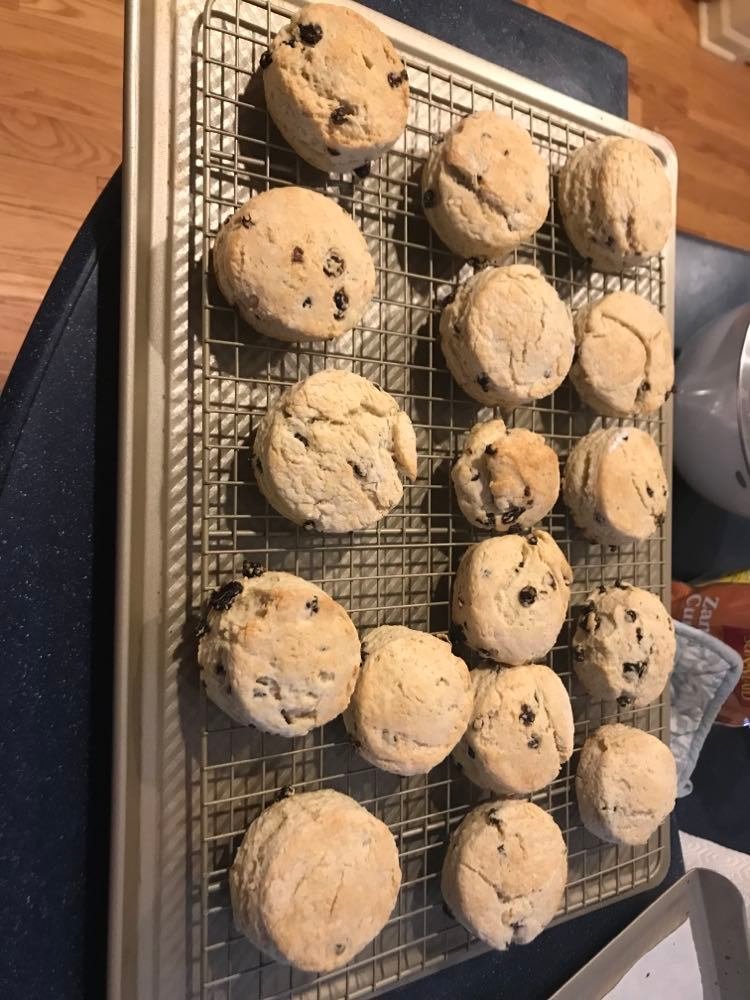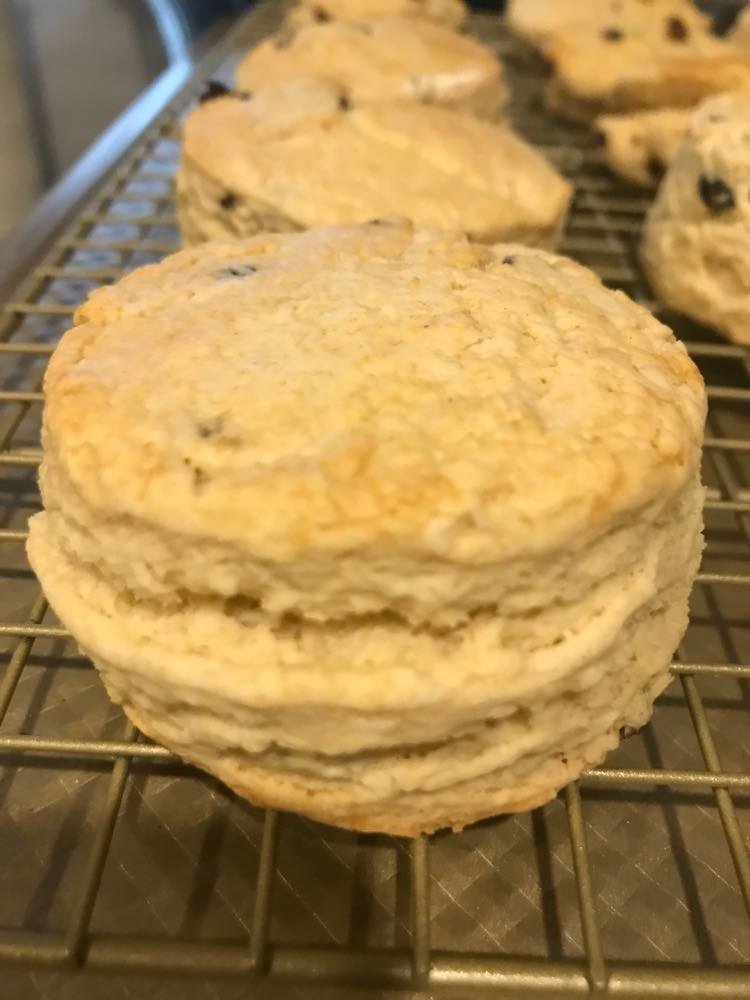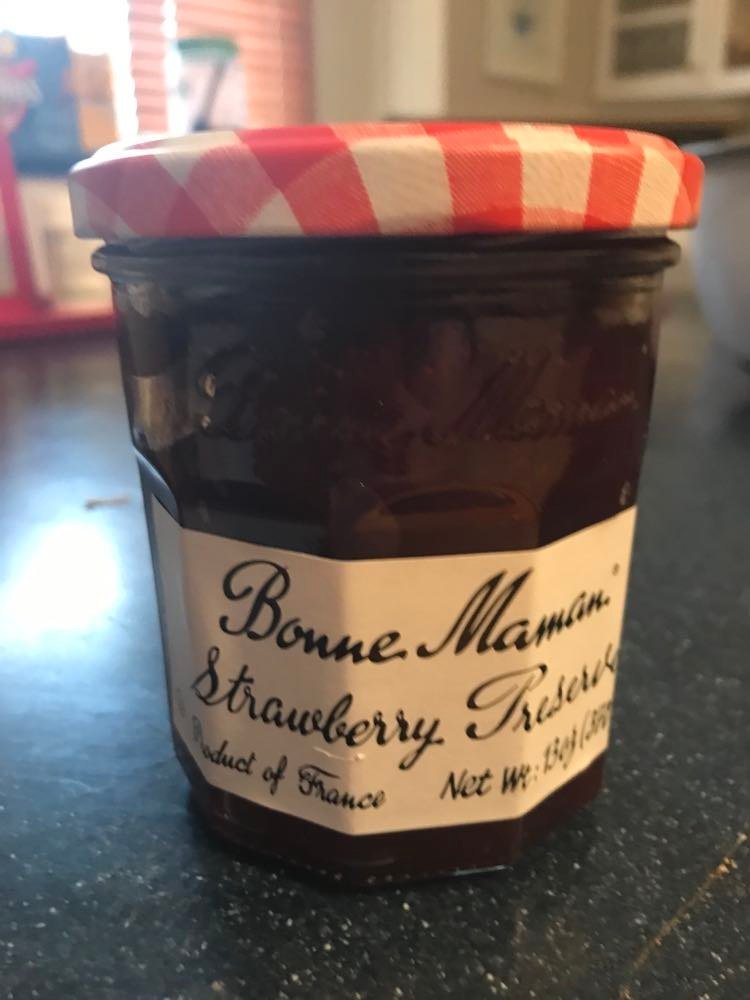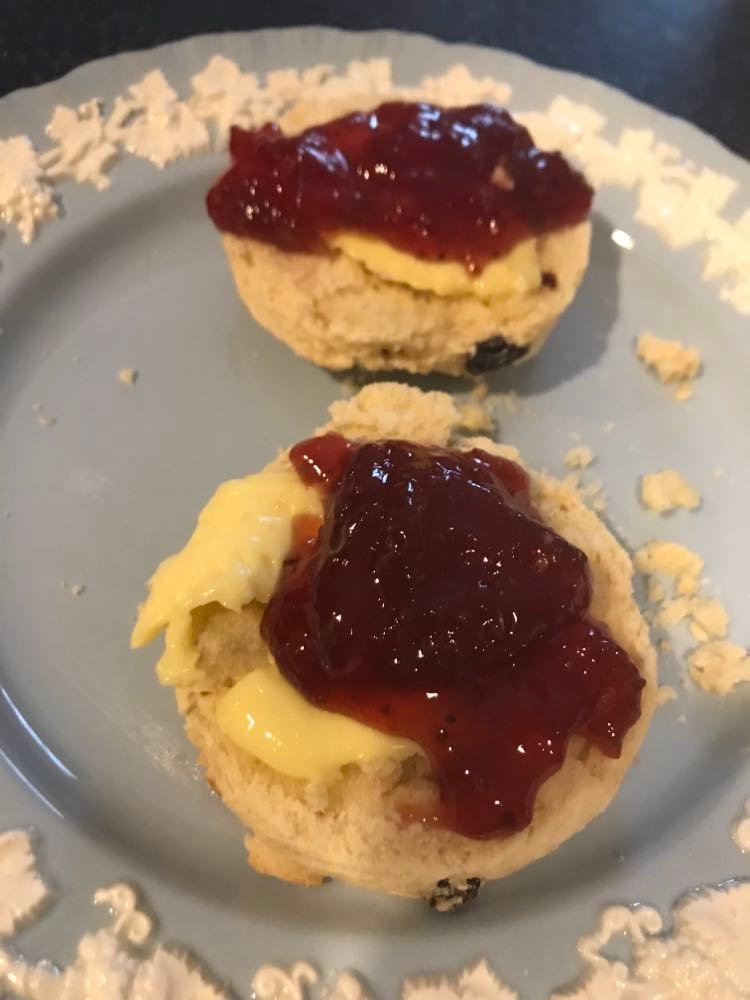Irish Scones: A Tasty Tradition
I wanted to do something special for St. Patrick’s Day this year and I thought baking would be comforting, especially during these scary times. My criteria were that it had to be an Irish recipe by an Irish baker. So, I Googled and found Donal Skehan’s friendly, smiling face.
According to Mr. Skehan’s bio on his website, he grew up in Howth, Co. Dublin and he’s living there again with his family, after spending time in Los Angeles. He’s also quite accomplished. “After Starting one of Ireland’s first food blogs in 2007, he was catapulted to stardom with hit TV series on BBC, Food Network, RTE & FOX with accompanying best-selling cookbooks,” boasts his site. He recently published his 10th cookbook and was the former member of an Irish boy band, Streetwize. These are excellent credentials in both baking and Irishness.
Next, I wanted Irish fare and when I found the word traditional, not once but twice in the recipe section I felt reassured. It’s so cold outside in the American Midwest. There’s still snow on the ground. Traditional feels like that Irish sweater that keeps you warm and what a beloved grandmother bakes for you.
Baking is a family affair in my house and I read recipes aloud to my mother from the “Traditional Irish” section of Mr. Skehan’s website under “Recipe Themes,” like I was reading a wish list. We landed on "Traditional Irish Scones” because it seemed simple enough to not get horribly wrong and I thought it would be a recipe I might use frequently because the Irish eat the biscuit-like bread often. According to Vanessa Greenwood of The Irish Times,”We have a wonderful tradition of serving warm, freshly baked scones almost everywhere in Ireland – in homes, small cafes, pubs and hotels. Tourists delight in tasting their first freshly baked Irish scone. The simple ordinariness of scones makes us take them for granted, when they might justifiably be regarded as a national treasure.”
Irish scones slathered in Kerrygold Irish butter and strawberry preserves.
I do have some experience baking the triangular scones that my dad was fond of (using a King Arthur Flour mix), but this was my first try at a European version. I didn’t start out with the dainty variety. According to Mr. Skehan in the YouTube video of the recipe (see below),“This is not like afternoon tea scones. These are real hardcore Irish scones and they’re absolutely delicious.” It was helpful that the recipe included both the imperial or standard measurement of the United States and not just the metric system used in Ireland and Great Britain. I still asked Alexa and my mom to translate measurements, however.
Besides the metric system, I noticed a slight variation in language too. For instance, when I first read the recipe I worried that I didn’t have a measuring jug and then I looked it up and saw that it was the same as a measuring cup. I did have a circular pastry cutter, which my sister loaned me and which I am grateful for, but in the future I would use a larger one, possibly with fancy fluted edges like Mr. Skehan’s cutter. According to him, the recipe should make approximately eight scones, whereas my mom and I baked double that. Next time I want people to have that full, satisfied feeling after eating a rich, sizable scone. I’ll save the smaller cutter for that afternoon tea.
“This is not like afternoon tea scones. These are real hardcore Irish scones and they’re absolutely delicious.”
Before I even recognized the issue with the cutter size though, there was another problem. Despite my mom and I watching the video and reading the recipe several times, I missed a step. Even though I learned what a measuring jug is, I didn’t use it the way he did as a container to whisk the milk and egg. I followed the third step, which told me to add the milk and egg to the well my mom and I had created with the dry ingredients and the butter. Then, the fourth step explained that I should mix the milk and egg together in a measuring jug but I had already poured them into the well, based on what I had read in the previous step. That was frustrating but like the expression goes, “Don’t cry over spilled milk.” So, we improvised and I whisked them together in the well after my mom gave me a pep talk, while covered in flour.
Another source of confusion for me was that after I added the two tablespoons of sugar in the second step of the recipe, I looked at the ingredients and saw three tablespoons listed, so I added another tablespoon of sugar. It was only later that I deduced what the third tablespoon must be meant for when I read the sixth step: “Brush each scone with some milk and sprinkle with the remaining sugar.” It would have been helpful if it was specified in the ingredient list that one tablespoon was to be set aside for sprinkling on the scones.
Also, on the sixth step, I didn’t realize I had missed the option of doing an egg wash. After the scones were already in the oven, I thought I made another mistake and I looked to see where I had missed the opportunity to give them that shine in the recipe. On the video he talks about an egg wash and text pops up suggesting either an egg wash or milk wash, but the written recipe only gives instructions for a milk wash, which I did without realizing I had inadvertently chosen one over the other. Maybe this is why my scones looked more pale than his golden ones. I borrowed my sister’s pastry brush for this. I was prepared to do every detail of the instructions but I didn’t realize the recipe would be slightly altered on different platforms, as I paid the most attention to the written one while I was baking.
Altogether, these are small mistakes and inconsistencies that I could easily sort out next time. It was irksome not to get it totally right because I think the best results come from being exact, but like the Irish Spring ad says “The Irish never quit.” I’m glad I didn’t because the results were still enticing.
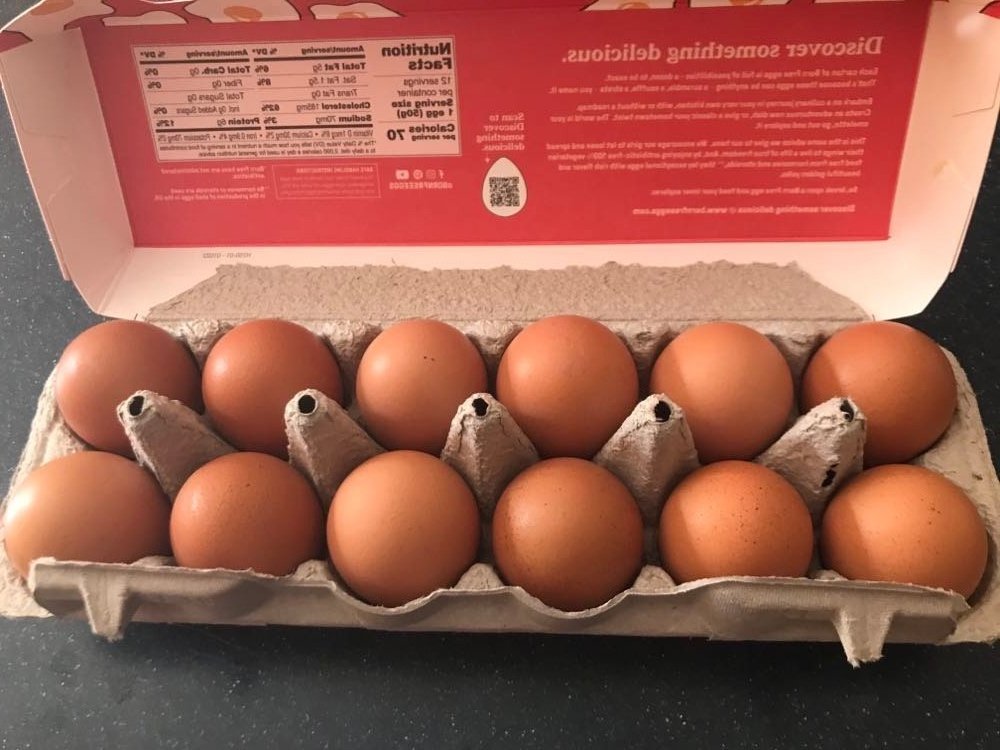
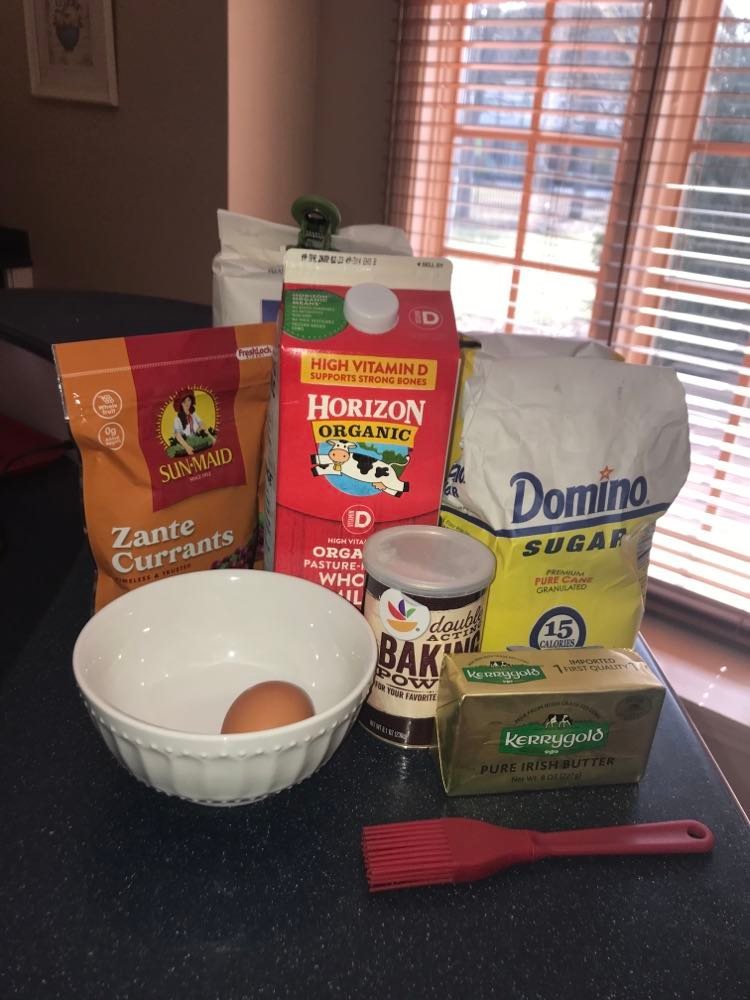
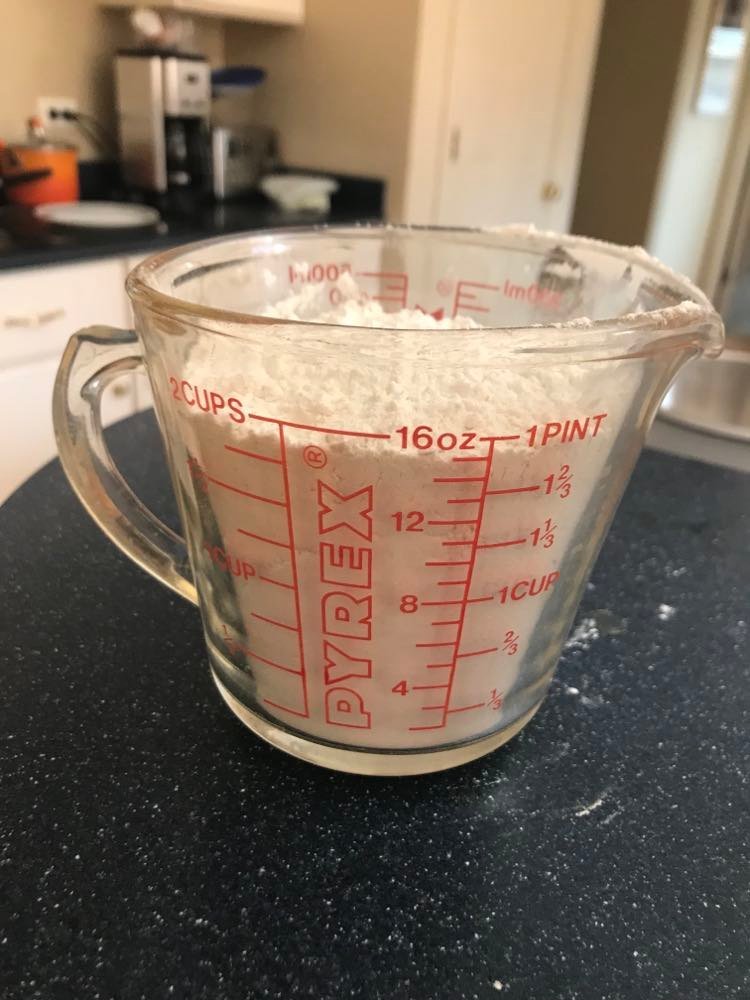

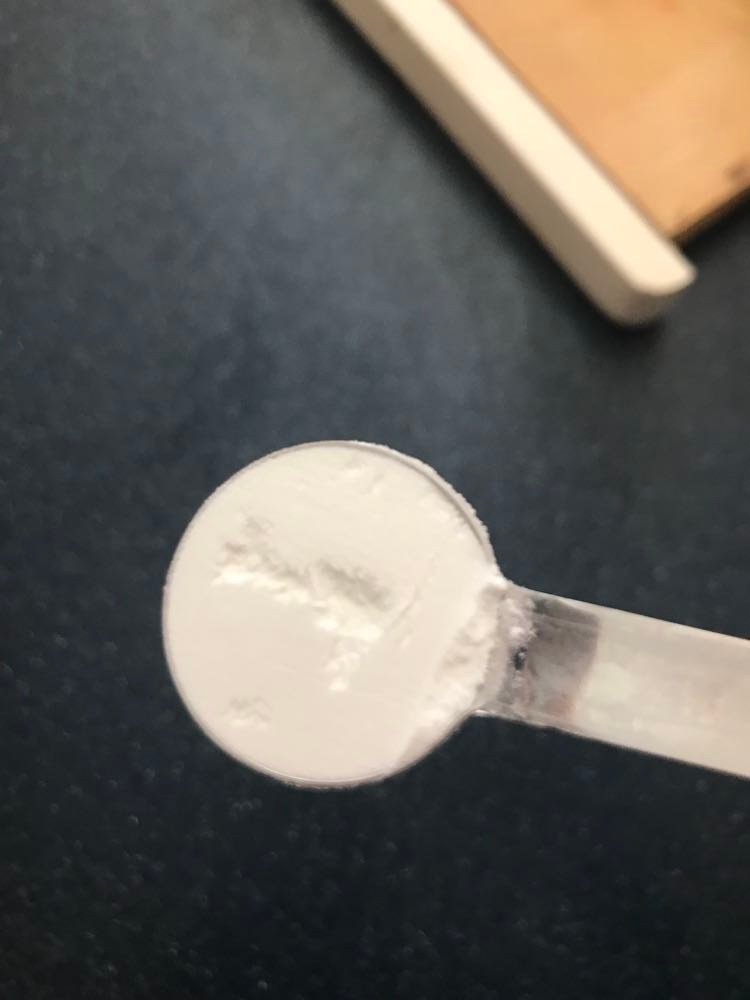
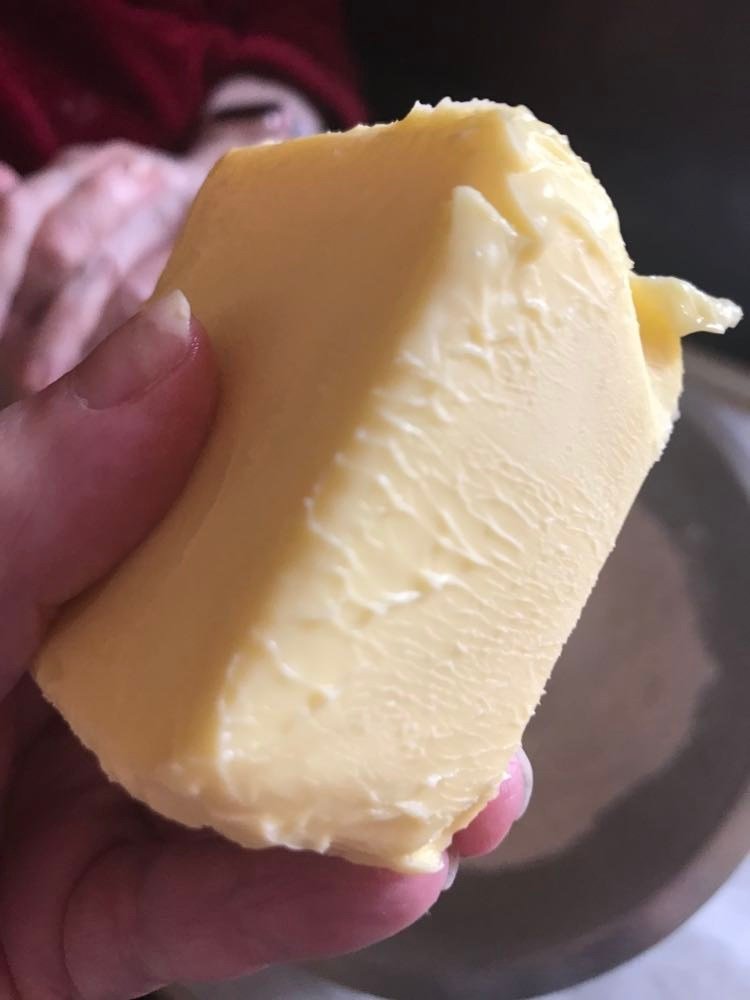
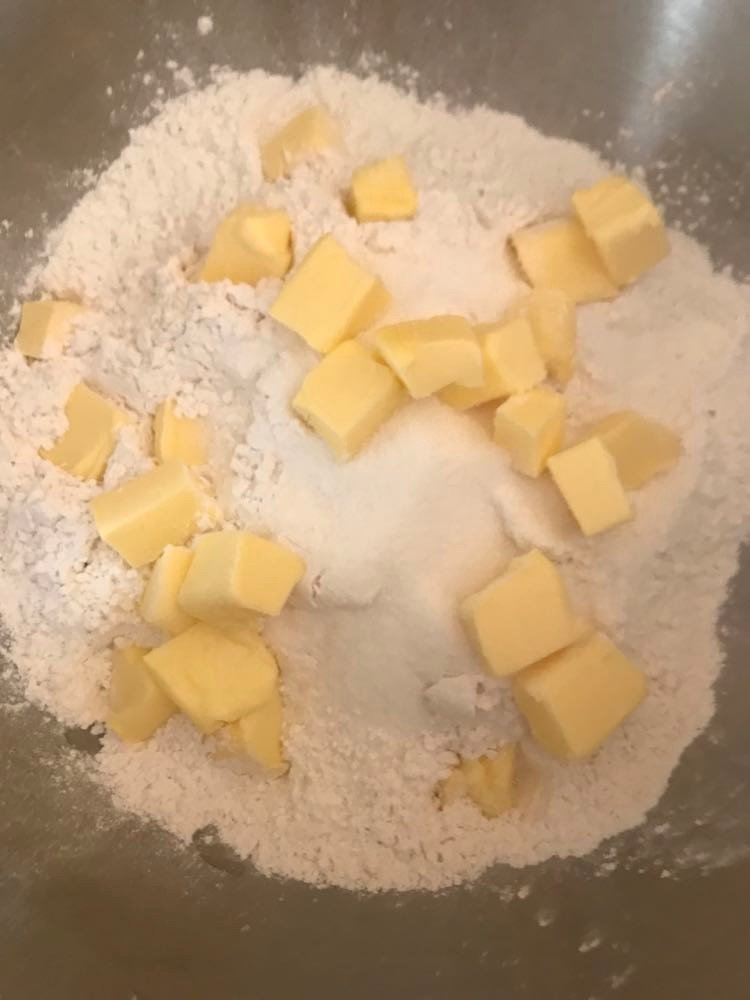
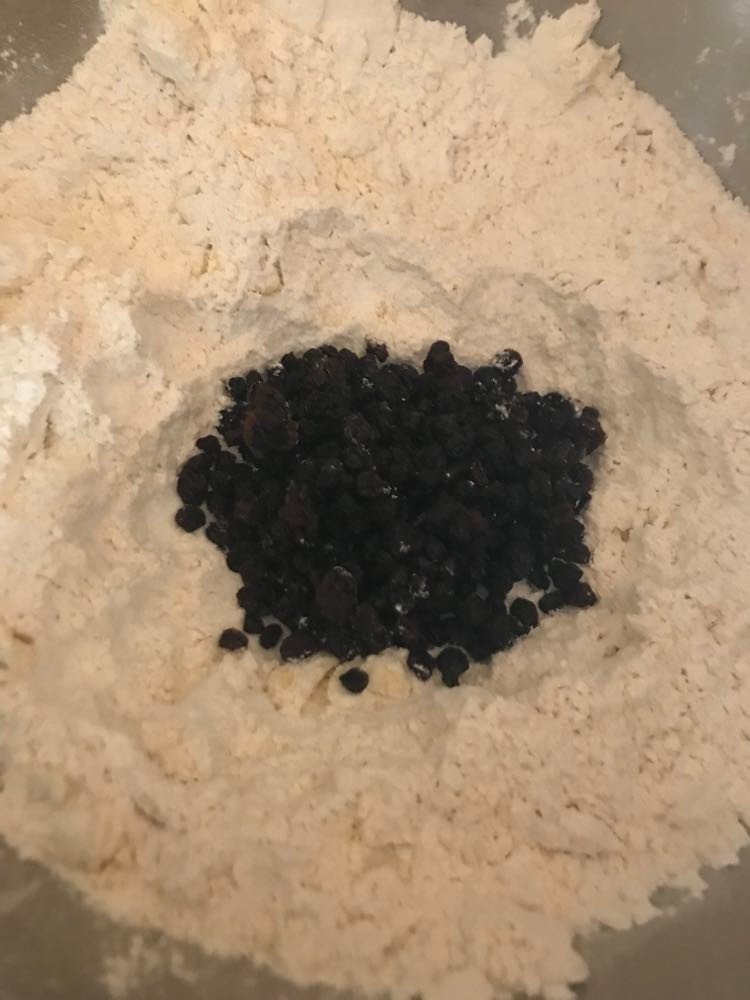
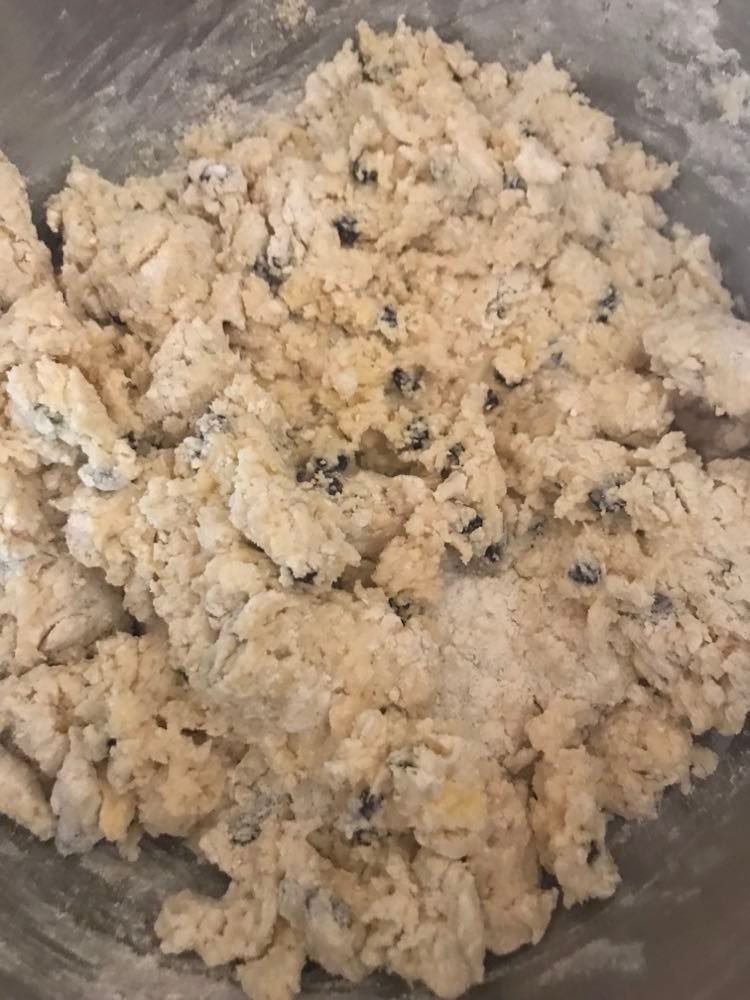
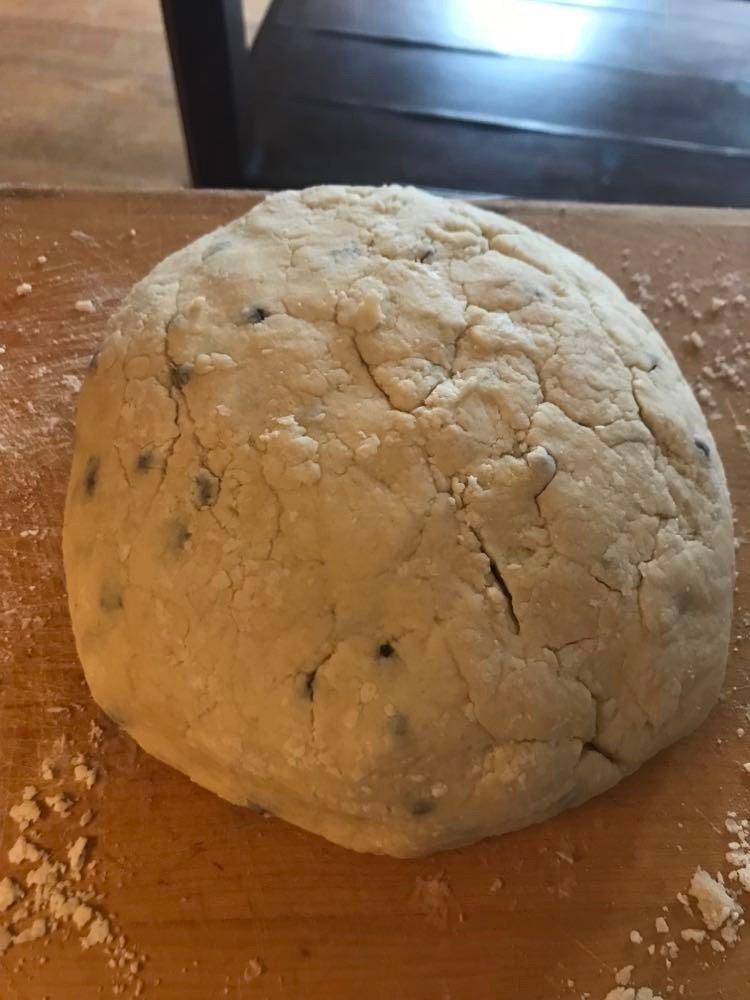
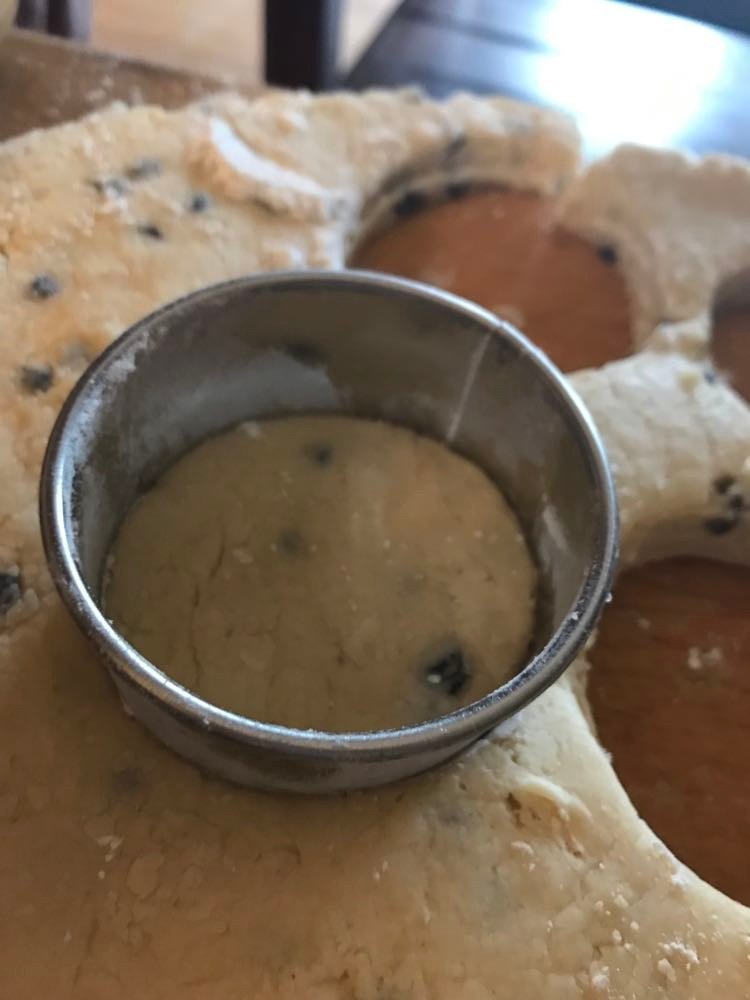
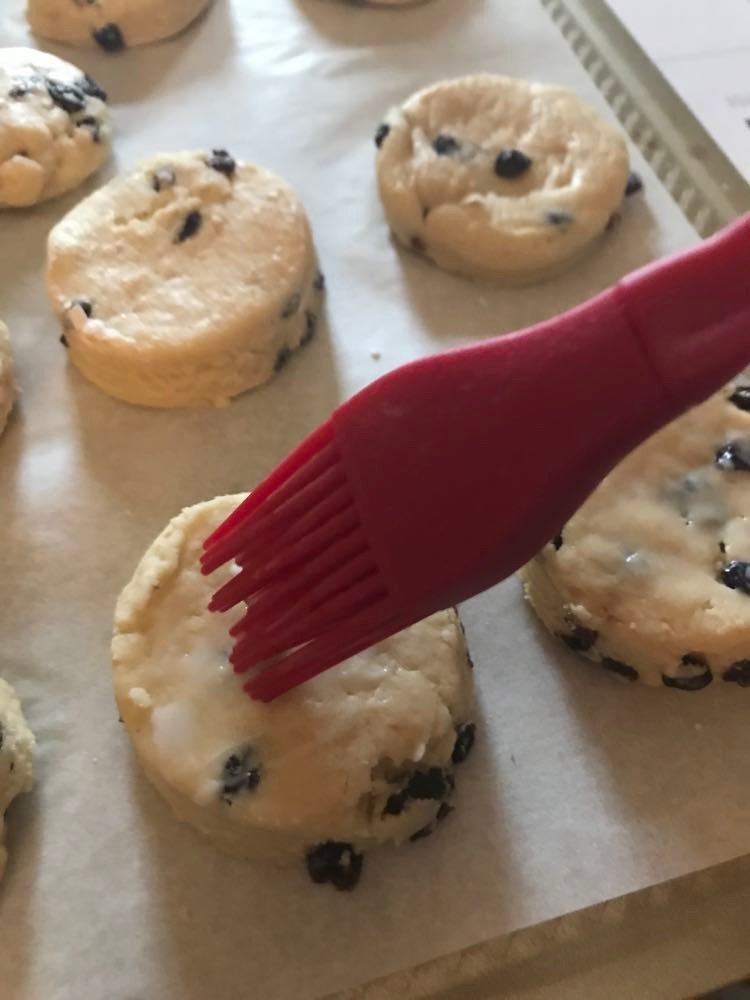
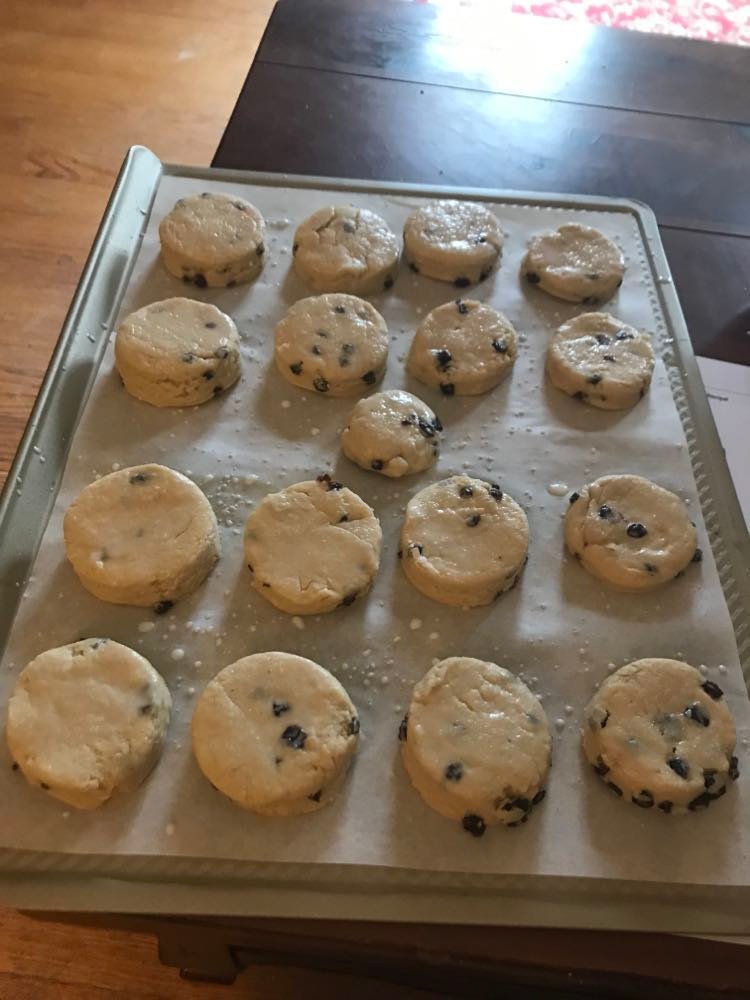
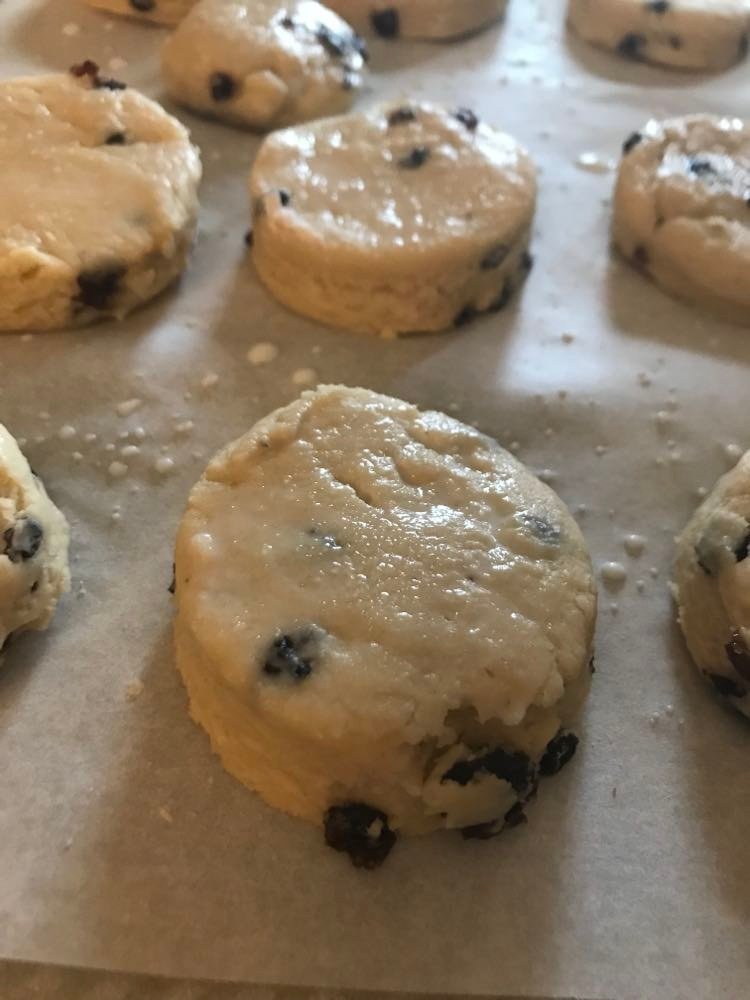
The scones came out of the oven with a rich buttery taste. My mom said that Mr. Skehan’s advice of leaving lumps of butter in the mixture did exactly as he promised - “creating the lovely flaky layers of a beautiful scone.” However, I was worried that my mistake with the sugar might have made them too sweet, but it didn’t and there was a nice accompanying tartness from the fruit.
I hadn’t tried currants before and I actually had to look up what I assumed is a cousin of the raisin by their look and feel. They have the same small shape, black color and wrinkly texture. It turns out they are a type of raisin. I never thought the sticky ones in the little red Sun-Maid boxes that my mom packed in my school lunches had siblings that are mostly for baking, from select vineyards. It turns out the same company that helped to make my lunch healthy also makes Zante currants, which,“…are sun-dried from the Black Corinth grape.”
However, indulgence and not healthy eating was on my mind when I heard Mr. Skehan recommend that in his opinion, the best way to eat scones is the Irish way. “Butter and jam is your only man,” he said, while holding aloft the freshly prepared baked good. I was a little disappointed that clotted cream was off the table but that would have made the scones English and, of course, been an utter baking betrayal. However, the strawberry preserves, which I used in place of jam, and the Kerrygold Irish butter more than made up for it, especially since, like in the video, I sliced the scone horizontally and generously slathered both sides. It went from being a treat that tasted good, but was perhaps a little plain, to one where I was saying,”Mmmmm…”with sticky fingers and a sense of well-being.
